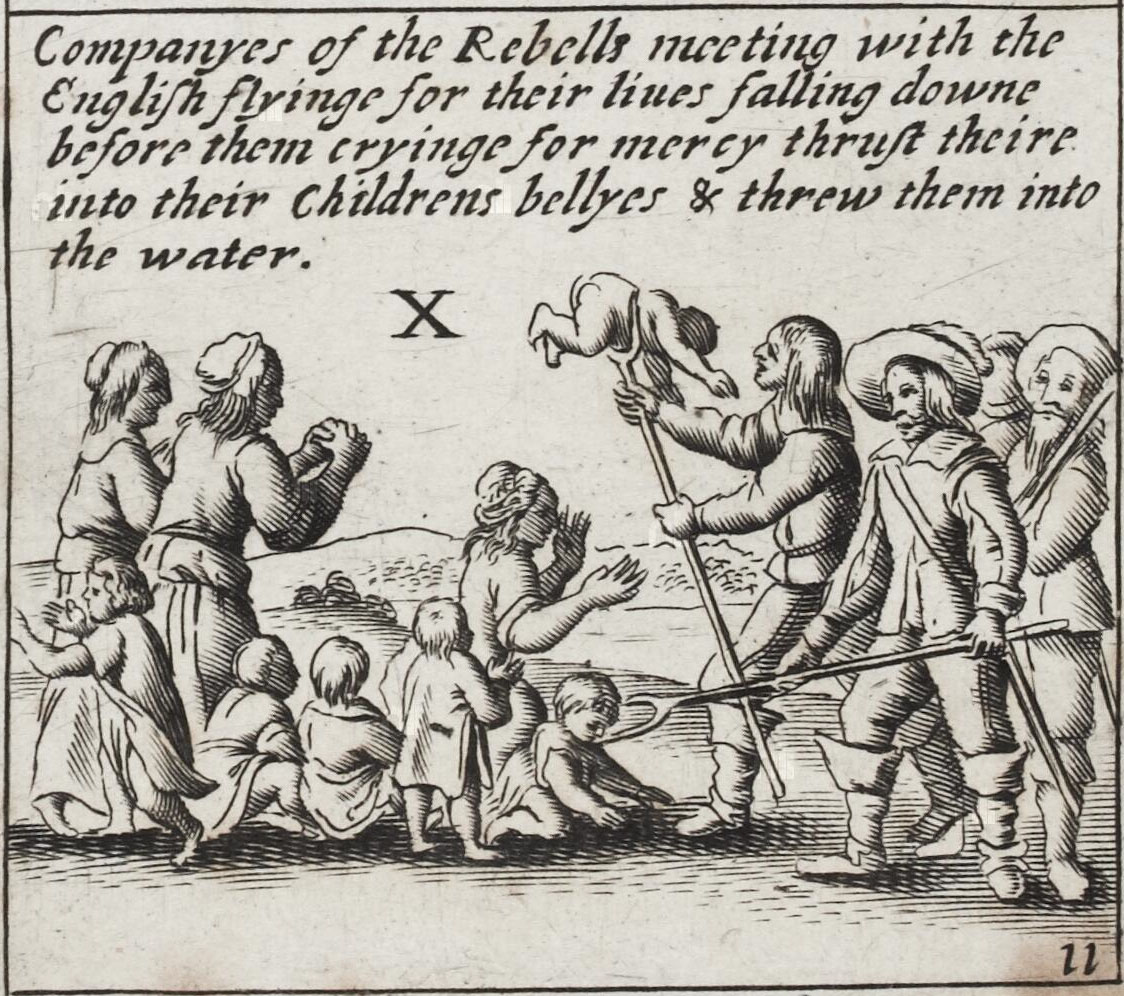Ireland History Rebellion of 1641
Enlarge text Shrink text- Britannica Macro.:v. 21, p. 1010 (A general rising of the Irish in Ulster was almost inevitable. It took place in October 1641 and thousands of colonists were murdered or fled.)
- BBC Wars & conflicts Web site, April 6, 2007(1641 Rebellion: a bloody episode in Irish history, the 1641 rebellion erupted in the first instance in Ulster, when rebel Catholic elements surprised Protestant settlers, massacring large numbers.)
The Irish Rebellion of 1641 was an uprising in Ireland, initiated on 23 October 1641 by Catholic gentry and military officers. Their demands included an end to anti-Catholic discrimination, greater Irish self-governance, and return of confiscated Catholic lands. Planned as a swift coup d'état to gain control of the Protestant-dominated central government, instead it led to the 1641–1653 Irish Confederate Wars, part of the wider Wars of the Three Kingdoms. Despite failing to seize Dublin Castle, rebels under Felim O'Neill quickly over-ran most of Ulster, centre of the most recent land confiscations. O'Neill then issued the Proclamation of Dungannon, a forgery claiming he had been authorised by Charles I of England to secure Ireland against his opponents in England and Scotland. Many Royalist Anglo-Irish Catholics responded by joining the uprising, and the rebellion spread throughout Ireland. In November, rebels besieged Drogheda and defeated a government relief force at Julianstown. Especially in Ulster, thousands of Protestant settlers were expelled or massacred, and Catholics killed in retaliation. By April 1642, Royalist troops held Dublin, Cork, and large areas around them, with much of Ulster occupied by a Scottish Covenanter army and local Protestant militia. This left approximately two thirds of Ireland under rebel control. In May 1642, Ireland's Catholic bishops met at Kilkenny, and declared the rebellion a just war. Along with members of the Catholic nobility, they created an alternative government known as Confederate Ireland. For the next ten years, the Confederacy fought a three-sided war with Irish Royalists, Scottish Covenanters and English Parliamentarians.
Read more on Wikipedia >
 Topic
Topic




